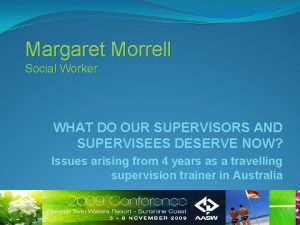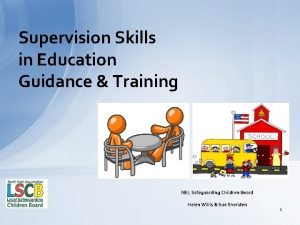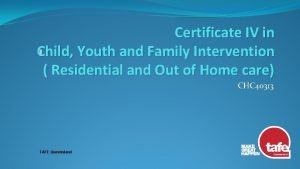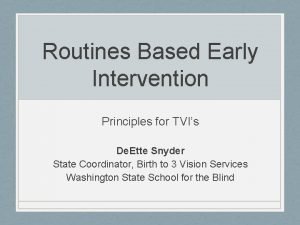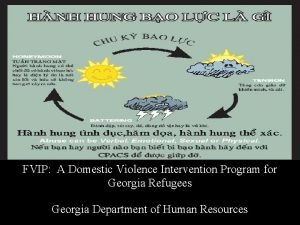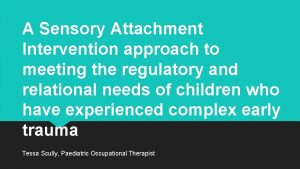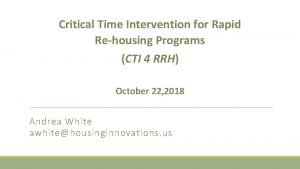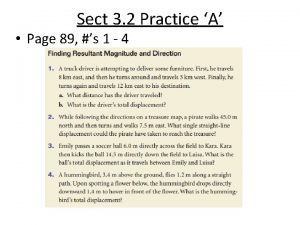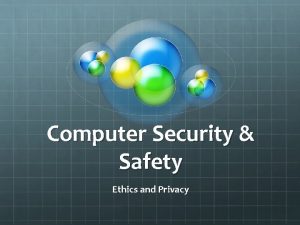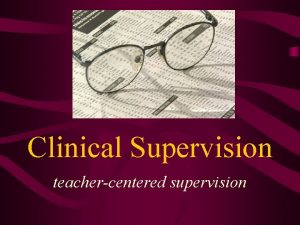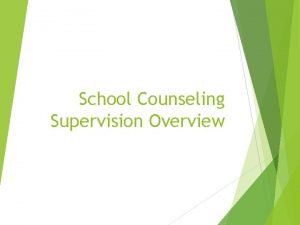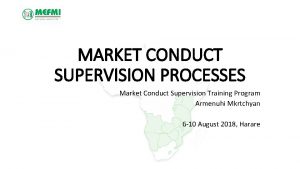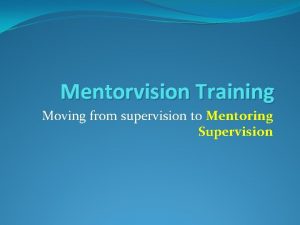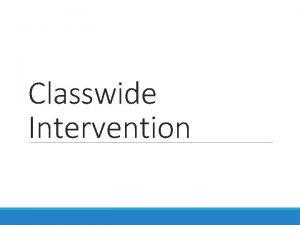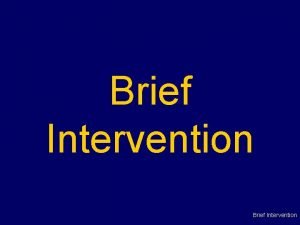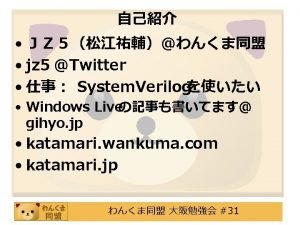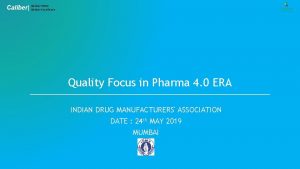Using Live Supervision to Deliver Family Intervention Training


















- Slides: 18

Using Live Supervision to Deliver Family Intervention Training Rick Allan and Anita Savage Grainge Footer

Family work training and supervision? ?

Why deliver this module? • Data collected by the teaching team and ex-graduates of the programme suggested that the level of general perceived self efficacy in mental health practitioners also plays a big part in whether family interventions will be used in routine clinical practice after training. • The level of self-efficacy was significantly lower for working with families undertaking family work compared to working with individuals. § Self-efficacy is a concept introduced by Albert Bandura in 1977 as a core aspect of ‘Social Cognitive Theory’. He defines self-efficacy as: “People’s beliefs about their capabilities to produce designated levels of performance that exercise influence over events that affect their lives”. § Self-efficacy relates to the conviction a person holds regarding their ability to achieve goals, in this case supporting families in the management and treatment of their relative’s symptoms.

Course structure and delivery As per course handbook Study day 4 week block to work with families Study day working with families Follow up study day

Each family session = 70 mins/3 x 20 mins work sessions/2 x 5 mins coaching sessions Coaching-5 mins. Working with family 20 mins Coaching 5 mins.

Coaching agreements with the family • Families need to agree to presence of clinical supervisor in the family sessions. Students also need to agree structure of 70 minute family session to include breaks for the family whilst 5 minutes Coaching takes place. • This can be arranged through preliminary meetings where students discuss the role of the clinical supervisor with families. Or to include clinical supervisor in the initial meeting for introductions. • Clinical supervisors to remain silent through 3 x 20 minutes sessions with families. • Clinical supervisor can also be PSI trained local practitioner -the students trained up and the local practitioner then work at developing a local family intervention service as per NICE guidelines.

Clinical supervision • As well as coaching within the session students received one hour of clinical supervision for every family session. • This session followed immediately after the family session. • Clinical supervision documents were completed after each clinical supervision session and submitted the recording and commentary.

Using Live Supervision to Develop Family Intervention Services • A recorded family session of one hours duration. • 1000 word reflective commentary on the session. • To include the core • Supervision items of Family documents. Intervention Scale and one specific intervention item.

Using Live Supervision to Develop Family Intervention Services Anita Savage Grainge, Rick Allan and colleagues discuss a small pilot study that enabled practitioners to participate on a course offering families psychosocial support • • • Keywords Family interventions Live supervision Naturalistic learning Psychosis.

Abstract • Family psychosocial interventions are recommended as first-line treatments to reduce stress in families that have a member experiencing psychotic illness. Clinical strategies to be taught and practised include goal setting, problem solving, communication training, information provision and relapse prevention. • With live supervision, there is little or no separation between the mechanisms of teaching, learning, supervising and applying learning to skills deployed in the tight situational context that is the family environment. Two findings of this pilot study were that a new schema of learning was required for such training and that anxieties on all sides should be taken into account as well as evident benefits. • The discussion includes implications for researchers and future family intervention training and commissioning. Footer

• ‘With live supervision, there is little separation between teaching, learning, supervising and applying learning’

• Measures- Data collection • Evaluation of the course was completion of the General Perceived Self-Efficacy and Locus of Control measures. • Data collected from the students before, during and 12 months after completion of the course. • Locus of control does show changes scores for 2 student’s. The lower scores indicate a move towards a more internalised locus of control for these students. • Practitioners in this group all thought that their clinical interventions contributed to a good outcome for their clients. • Locus of Control refers to the extent to which an individual believes an outcome or goal has been determined by their own actions or by other external factors such as luck, chance , fate, others. • A focus group based on grounded theory research was arranged. • Self-efficacy relates to the conviction a person holds regarding their ability to achieve goals, in this case supporting families in the management and treatment of their relative’s symptoms.

Findings • Minimal change to perceived self-efficacy, which would indicate limited effect of the training on levels of selfefficacy. • Locus of control does show changes scores for 2 student’s. The lower scores indicate a move towards a more internalised locus of control for these students. • Practitioners in this group all thought that their clinical interventions contributed to a good outcome for their clients.

Supervision in Harrogate • • • Present a current family to group Any stage of work Formulation Problem solving Supportive Educational

Business meeting in Harrogate • • • New referrals Current families Update on development plans Feedback from implementers group Literature and articles Feedback on training

Conclusions • A small family intervention service has flourished. • Supervision is provided. • Module has been repeated in another locality.

Finally • Larger trials of ‘naturalistic learning’ methods and the use of measures of, for example, self-efficacy and confidence, as well as competence, need to be undertaken which could suggest beneficial outcomes in other areas of education and service provision.

Reference • Savage Grainge A, Bulmer C, Fleming M, Allen R. (2013) Using Live supervision to develop family intervention service. Mental Health Practice, Vol 16, 12 -18.
 Margaret morrell supervision
Margaret morrell supervision Safeguarding supervision training
Safeguarding supervision training Cert iv in child youth & family intervention
Cert iv in child youth & family intervention Family guided routines based intervention
Family guided routines based intervention Family violence intervention program atlanta
Family violence intervention program atlanta Fvip georgia
Fvip georgia Www.quizlet.live
Www.quizlet.live Live healthy be happy
Live healthy be happy Sensory attachment intervention
Sensory attachment intervention Leveled literacy intervention training
Leveled literacy intervention training Critical time intervention training
Critical time intervention training We deliver the world
We deliver the world What is stack card in warehouse
What is stack card in warehouse Observe ikinci hali
Observe ikinci hali A truck driver attempting to deliver some furniture
A truck driver attempting to deliver some furniture How to deliver entertainment speech
How to deliver entertainment speech Cheapest to deliver futures
Cheapest to deliver futures Is a destructive event a program is intended to deliver.
Is a destructive event a program is intended to deliver. Where does “snowflake girl” help to deliver presents?
Where does “snowflake girl” help to deliver presents?
